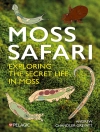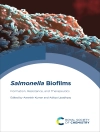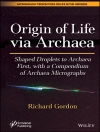Blood Science is a relatively new discipline which merges biochemistry, haematology, immunology, transfusion science and genetics. This bringing together of traditional disciplines requires a corresponding change in education and training for healthcare scientists and Blood Science: Principles and Pathology is written in response to this emerging need.
An introduction to the subject and an overview of the techniques used in blood science are followed by a series of chapters based on groups of analytes investigated in blood – red blood cells, white blood cells and platelets, followed by the constituents of plasma, including waste products, electrolytes, glucose, lipids, enzymes, hormones, nutrients, drugs, poisons and others.
Each chapter is supported by learning objectives, summaries and further information, and a focus is given to chapter specific case studies with interpretation to demonstrate how laboratory data in conjunction with clinical details is utilised when investigating patients with actual or suspected disease. Finally, a separate chapter offers more detailed case reports that integrate the different aspects of blood science.
Undergraduate students taking blood science modules as part of their BSc programmes in Biomedical and Healthcare Sciences will appreciate the level of integration between clinical biochemistry and haematology. In addition, this book will provide suitable initial reading for those students embarking on blood science modules on MSc programmes and will be of value to new graduates entering the profession and starting their career in blood science departments by supplementing practice-based training with the required theoretical underpinning.
This book is approved by the Institute of Biomedical Science and written by its expert writers, many of whom work on the Institute’s advisory panels.
Table of Content
Preface, xiii
Acknowledgements, xv
List of Abbreviations, xvii
About the Companion Website, xxi
1 Introduction to Blood Science, 1
1.1 What is blood science?, 1
1.2 Biochemistry, 6
1.3 Blood transfusion, 8
1.4 Genetics, 10
1.5 Haematology, 14
1.6 Immunology, 17
1.7 The role of blood science in modern healthcare, 19
1.8 What this book will achieve, 22
Summary, 23
References, 23
Further reading, 23
Web sites, 23
2 Analytical Techniques in Blood Science, 25
2.1 Venepuncture, 25
2.2 Anticoagulants, 26
2.3 Sample identification and tracking, 27
2.4 Technical and analytical confidence, 27
2.5 Major techniques, 32
2.6 Molecular genetics, 43
2.7 Point of care testing, 47
2.8 Health and safety in the laboratory, 48
Summary, 49
Further reading, 50
Web sites, 50
3 The Physiology of the Red Blood Cell, 51
3.1 Introduction, 51
3.2 The development of blood cells, 52
3.3 Erythropoiesis, 56
3.4 The red cell membrane, 58
3.5 The cytoplasm of the red cell, 60
3.6 Oxygen transport, 66
3.7 Recycling the red cell, 68
3.8 Red cell indices in the full blood count, 69
3.9 Morphology of the red cell, 72
Summary, 74
Further reading, 74
4 The Pathology of the Red Blood Cell, 75
4.1 Introduction: diseases of red cells, 75
4.2 Anaemia resulting from attack on, or stress to, the bone marrow, 78
4.3 Anaemia due to deficiency, 80
4.4 Intrinsic defects in the red cell, 85
4.5 External factors acting on healthy cells, 100
4.6 Erythrocytosis and polycythaemia, 103
4.7 Molecular genetics and red cell disease, 105
4.8 Inclusion bodies, 105
4.9 Case studies, 105
Summary, 107
References, 107
Further reading, 107
5 White Blood Cells in Health and Disease, 109
5.1 Introduction, 109
5.2 Leukopoiesis, 111
5.3 Neutrophils, 115
5.4 Lymphocytes, 116
5.5 Monocytes, 117
5.6 Eosinophils, 118
5.7 Basophils, 119
5.8 Leukocytes in action, 120
5.9 White cells in clinical medicine, 127
5.10 Case studies, 132
Summary, 132
Further reading, 133
6 White Blood Cell Malignancy 135
6.1 The genetic basis of leukocyte malignancy, 135
6.2 Tissue techniques in haemato-oncology, 139
6.3 Leukaemia, 141
6.4 Lymphoma, 149
6.5 Myeloma and related conditions, 152
6.6 Myelofibrosis and myelodysplasia, 157
6.7 Case studies, 157
Summary, 158
Further reading, 159
Guidelines, 159
7 The Physiology and Pathology of Haemostasis, 161
7.1 The blood vessel wall, 162
7.2 Platelets, 163
7.3 The coagulation pathway, 165
7.4 Haemostasis as the balance between thrombus formation and removal, 168
7.5 The haemostasis laboratory, 171
7.6 The pathology of thrombosis, 173
Summary, 175
Further reading, 175
8 The Diagnosis and Management of Disorders of Haemostasis, 177
8.1 Thrombosis 1: overactive platelets and thrombocytosis, 177
8.2 Thrombosis 2: overactive coagulation, 181
8.3 Haemorrhage 1: platelet underactivity and thrombocytopenia, 193
8.4 Haemorrhage 2: coagulation underactivity, 199
8.5 Disseminated intravascular coagulation, 203
8.6 Molecular genetics in haemostasis, 204
8.7 Case studies, 205
Summary, 206
References, 206
Further reading, 207
Guidelines, 207
Web sites, 207
9 Immunopathology, 209
9.1 Introduction, 209
9.2 Basics of the immune system, 210
9.3 Humoral immunity, 212
9.4 Immunopathology 1: immunodeficiency, 215
9.5 Immunopathology 2: hypersensitivity, 221
9.6 Immunopathology 3: autoimmune disease, 226
9.7 Immunotherapy, 232
9.8 The immunology laboratory, 234
9.9 Case studies, 238
Summary, 239
References, 240
Further reading, 240
Guidelines, 240
Web sites, 240
10 Immunogenetics and Histocompatibility, 241
10.1 The genetics of antigen recognition, 241
10.2 Human leukocyte antigens, 245
10.3 Transplantation, 251
10.4 Autoimmunity and human leukocyte antigens, 257
Summary, 260
Further reading, 260
Guidelines, 260
Web sites, 260
11 Blood Transfusion, 261
11.1 Blood collection and processing, 262
11.2 Blood groups, 265
11.3 Laboratory practice of blood transfusion, 273
11.4 Clinical practice of blood transfusion, 279
11.5 Hazards of blood transfusion, 281
Summary, 284
References, 284
Further reading, 284
Guidelines, 284
Web sites, 285
12 Waste Products, Electrolytes and Renal Disease, 287
12.1 Renal anatomy and physiology, 287
12.2 Homeostasis, 288
12.3 Excretion, 295
12.4 Renal endocrinology, 297
12.5 Renal disease, 298
12.6 Case studies, 301
Summary, 303
Further reading, 303
Guidelines, 303
Web sites, 303
13 Hydrogen Ions, p H, and Acid-Base Disorders, 305
13.1 Ions and molecules, 305
13.2 Blood gases, 308
13.3 Acidosis (p H
13.4 Alkalosis (p H >7.5), 313
13.5 Mixed acid-base conditions, 314
13.6 Clinical interpretation, 314
13.7 Case studies, 315
Summary, 316
Further reading, 317
Web site, 317
14 Glucose, Lipids and Atherosclerosis, 319
14.1 Glucose, 319
14.2 Dyslipidaemia, 333
14.3 Atherosclerosis, 343
14.4 Case studies, 347
Summary, 348
Further reading, 348
Guidelines, 349
Web sites, 349
15 Calcium, Phosphate, Magnesium and Bone Disease, 351
15.1 Calcium, 352
15.2 Phosphates, 355
15.3 Magnesium, 355
15.4 The laboratory, 355
15.5 Disorders of calcium homeostasis, 357
15.6 Disorders of phosphate homeostasis, 360
15.7 Disorders of magnesium homeostasis, 362
15.8 Bone physiology, 363
15.9 Bone disease, 364
15.10 Case studies, 368
Summary, 369
Further reading, 370
Guidelines, 370
Web sites, 370
16 Nutrients and Gastrointestinal Disorders, 371
16.1 Nutrients, 371
16.2 The intestines, 375
16.3 Case studies, 381
Summary, 382
Further reading, 382
Guidelines, 382
17 Liver Function Tests and Plasma Proteins, 383
17.1 Anatomy and physiology of the liver, 384
17.2 Liver function tests, 389
17.3 Diseases of the liver, 390
17.4 Plasma proteins, 396
17.5 Case studies, 405
Summary, 406
Further reading, 406
Web sites, 406
18 Hormones and Endocrine Disorders, 407
18.1 Endocrine physiology, 407
18.2 The pathology of the endocrine system, 417
18.3 Case studies, 434
Summary, 435
Further reading, 435
Web sites, 436
19 Cancer and Tumour Markers, 437
19.1 General concepts in cancer biology, 437
19.2 Blood science and cancer, 440
19.3 Molecular genetics, 444
19.4 Case studies, 445
Summary, 446
Further reading, 446
Guidelines, 447
Web sites, 447
20 Inherited Metabolic Disorders, 449
20.1 The genetics of inheritance, 449
20.2 Molecular inherited metabolic disorders, 451
20.3 Organelle inherited metabolic disorders, 455
20.4 Antenatal diagnosis and neonatal screening, 455
20.5 Case studies, 456
Summary, 457
Further reading, 457
21 Drugs and Poisons, 459
21.1 Toxicology, 459
21.2 Toxicology of specific compounds, 461
21.3 Therapeutic drug monitoring, 465
21.4 Case studies, 468
Summary, 469
References, 469
Further reading, 469
22 Case Reports in Blood Science, 471
Abbreviations, 471
Case report 1, 472
Anaemia, hypercalcaemia, proteinuria, myeloma
Case report 2, 473
Diabetes, glycated haemoglobin, chronic renal failure
Case report 3, 474
Acute kidney injury, leucocytosis, neutrophilia, viruses
Case report 4, 475
Part 1: Obesity, colorectal cancer, CEA, hypothyroidism. Part 2: Alcoholism, raised GGT and triacylglycerols
Case report 5, 477
Part 1: No abnormalities. Part 2: Asthma, raised Ig E. Part 3: Falling haemoglobin, rising ESR, lung cancer
Case report 6, 479
Hypothyroidism, marginally reduced haemoglobin
Case report 7, 480
Raised CRP, ESR, rheumatoid factor and anti-nuclear antibodies; borderline anti-ds DNA antibodies, low C3, low e GFR and so mild renal failure, systemic lupus erythematosus
Case report 8, 481
Normal blood results in renal transplantation
Case report 9, 482
Falling albumin, e GFR, haemoglobin, red cell count and platelets, rising ESR, white cell count and neutrophila, CRP, urea and creatinine, septicaemia
Case report 10, 484
Microcytic anaemia, thrombocytopenia, lymphocytosis, abnormal LFTs, falling albumin, raised CRP, myositis with raised CK, viruses
Case report 11, 486
Acidosis, hyperglycaemia, diabetic ketoacidosis, acute renal injury, raised urea and creatinine
Case report 12, 487
Low haemoglobin, thrombocytopenia, raised CRP and d-dimers, abnormal LFTs, malaria, pregnancy
Case report 13, 488
Raised aldosterone, hypernatraemia, hypokalaemia, Conn’s syndrome Case report 14, 489
Paediatric diabetic ketoacidosis, hyperglycaemia, low bicarbonate, raised phosphates, ALP and proteins
References, 490
Appendix: Reference Ranges, 491
Further Reading, 493
Glossary, 495
Index, 519
About the author
Dr Andrew Blann, FRCPath FIBMS CSci, Consultant Clinical Scientists and Honorary Senior Lecturer in Medicine, University Department of Medicine, UK; Deputy Chief Examiner in Haematology with the Institute of Biomedical Science and an Examiner in Haematology with the Royal College of Pathologists.
Dr Nessar Ahmed, CSci FIBMS, Reader in Clinical Biochemistry, School of Healthcare Science, Manchester Metropolitan University, UK.











